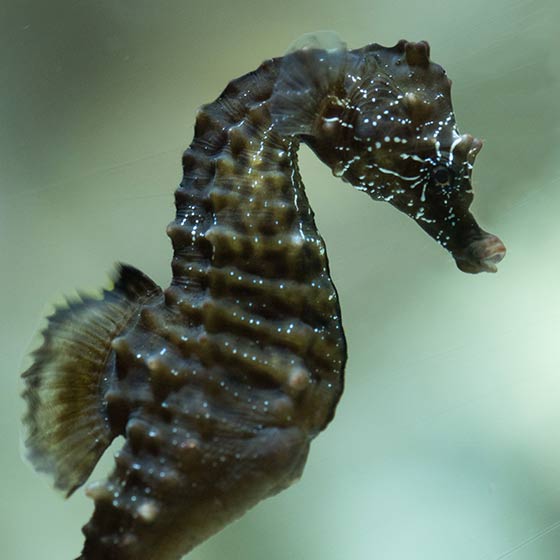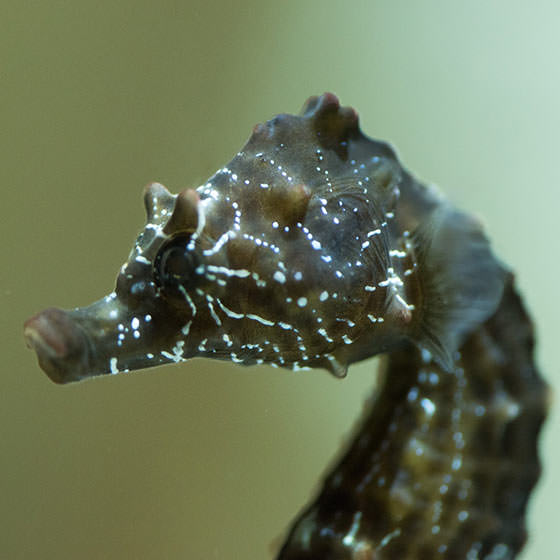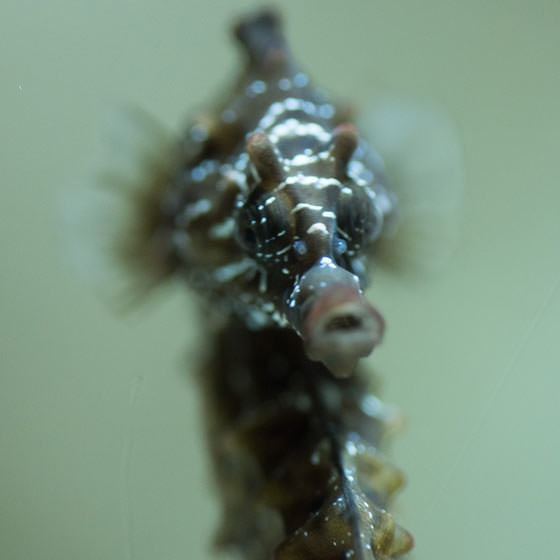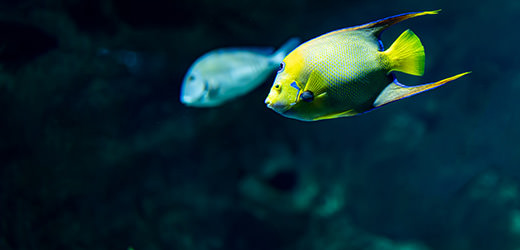Biology
Its name comes from the Greek ‘hippocampus’, or ‘curved horse’, in reference to its strange shape. In fact, seahorses are the only fish whose heads are not an extension of their bodies. They don’t really have scales but are instead covered with bony plates, and their modified caudal fin allows them to latch onto algae. They use their jaws, joined together in the form of a tube, to catch the zooplankton that makes up their diet.





